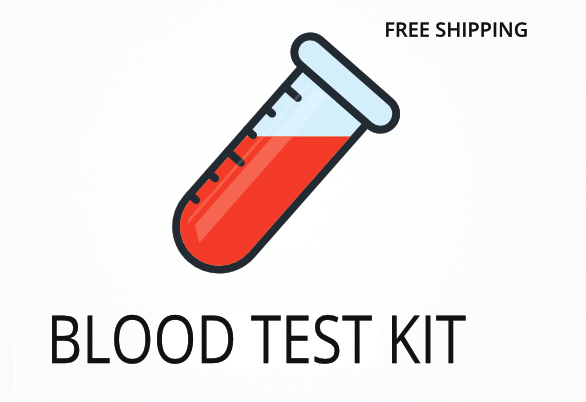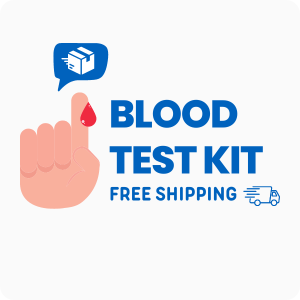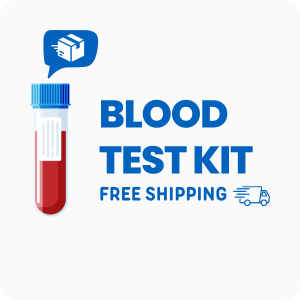Ordering the IgE Molds Test
Ordering the IgE Molds test helps pinpoint specific mold allergies that may be causing symptoms like sneezing, coughing, or skin rashes. This test measures your immune system’s response to 15 common indoor and outdoor molds, as well as your total IgE (immunoglobulin E) levels. Interestingly, some people can have high IgE levels to molds without obvious symptoms, which can still contribute to ongoing inflammation or unexplained fatigue.
Ordering this test provides several specific benefits:
- Identifies which mold allergens are triggering your immune system
- Measures total IgE to help assess your overall allergic response
- Supports targeted allergy management and environmental changes
- Helps your doctor decide if further allergy or asthma treatment is needed
- Can reveal hidden mold sensitivities that may not show up on skin tests
Who Should Consider Mold Allergy Testing
People who experience frequent sneezing, itchy eyes, or skin rashes after spending time indoors may benefit from this test. For example, someone who notices their symptoms get worse after cleaning a damp basement or after a rainy season could use this test to find out if mold exposure is the cause.
Ordering this test may also be helpful in these situations:
- Persistent nasal congestion or sinus pressure that does not improve with standard treatments
- Unexplained coughing or wheezing, especially in homes with visible mold or water damage
- Recurring eczema or hives that flare up in certain environments
- Fatigue or headaches that seem to worsen in specific buildings or rooms
- Difficulty concentrating or “brain fog” that improves when away from home or work
Testing for mold allergies can help you and your doctor make informed decisions about allergy management, environmental changes, and possible treatment options. Delaying this test may allow ongoing exposure to continue triggering symptoms, making it harder to identify and address the source.
Preparing for Mold Allergen and IgE Testing
Fasting is not required for the IgE Molds test, so you can eat and drink as usual before your blood draw. Always follow any instructions your doctor or healthcare provider gives you to make sure your sample is collected correctly and your results are as useful as possible.
Labs Included When Ordering Your IgE Molds Test
| Test Name | Reference Range | What This Measures | Low and High Levels of IgE Molds |
|---|---|---|---|
| 15 Molds, IgE | <0.35 | This test measures your immune system’s IgE antibody response to 15 common molds, including Aspergillus, Penicillium, Cladosporium, and Alternaria. It helps identify which molds are causing allergic reactions. |
High levels mean your immune system is reacting to one or more specific molds, which can trigger allergy symptoms.
Low levels mean you are less likely to have an allergic response to the tested molds. |
| Total IgE | 0-100 | Total IgE measures the overall amount of IgE antibodies in your blood, which can indicate your general tendency to have allergic reactions, including to molds, dust, or pollen. |
High levels mean your body is likely reacting to one or more allergens, which may include molds or other triggers.
Low levels mean you have a lower likelihood of allergic responses. |
Reference ranges may change slightly as labs update their methods or as new research becomes available.
IgE Molds FAQ
Is there IgE Molds testing near me?
This is a test kit that can be collected at a local draw site—check the draw location link at the top of the page. For people with ongoing congestion or skin symptoms, having a nearby collection site makes it easier to get tested quickly and start finding answers.
How do I interpret the test results?
While your treating physician should always review your results, we also offer a one-on-one test results review with our clinical team to help you understand what your numbers mean and what steps you can take next.
What is the cost of the test?
The price you see includes standard shipping to you and back to the lab, though a draw fee may apply at your local collection site. Ordering this test can help you identify specific mold triggers, which may help you reduce symptoms and recover faster.
How often should I retest?
Retesting is usually recommended every 6 to 12 months if you continue to have symptoms or after making changes to your environment. This helps track changes in your immune response and guides your next steps for allergy management.
How accurate is the test?
The IgE Molds test uses an enzyme immunoassay (EIA) method, with a specificity of 98% and a sensitivity of 96% for detecting IgE antibodies to molds. TrueHealthLabs.com partners with CLIA-certified and CAP-certified laboratories to uphold rigorous testing standards for dependable results.
Important Notes
- This kit cannot be mailed or collected in New York State. Contact us with questions.
Medical Review Board
Reviewed by Jeff Donohue M.D. from Body Logic and Brady Hurst DC, CCCN. Written by True Health Lab’s team of editorial health contributors.
Disclaimer: This information is for educational purposes only and not intended as medical advice. Consult your healthcare provider for personalized guidance.
Why Customers Trust True Health Labs - What People are saying
Also rated 4.6 out of 5 based on 3452 ShopperApproved reviews- See all TrueHealthLabs.com reviews.










